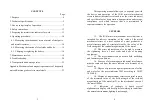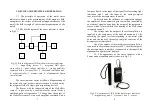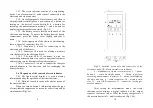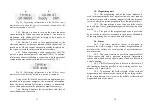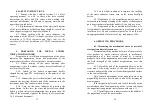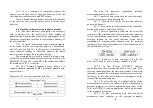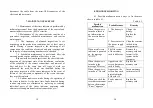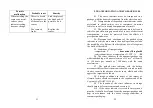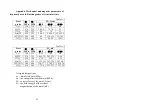
21
Possible
malfunction
Probable cause
Remedy
When installing the
sensor on a metal
surface, stress
indicator reading
does not change
There is a break
in the connection
of the cable to the
sensor.
The sensor is
faulty.
Find the place of
the break and, if
possible, fix it.
Replace the
sensor.
22
9. TRANSPORTATION AND STORAGE RULES
9.1. The stress indicator must be transported in a
package with the battery disconnected from the electronic unit.
9.2. Transportation of the packed stress indicator can be
performed in closed railway cars or containers, on motor
vehicles, as well as in heated compartments of aircraft.
9.3. The packed metal stress indicator must be fixed in
vehicles, and when using open vehicles, in case of short-term
transportation, it must be protected from the effects of
precipitation and water.
9.4. Placement and attachment of the packed stress
indicator in vehicles must ensure their stable position, exclude
the possibility of collision with other objects, as well as against
the walls of the vehicle.
9.5. Conditions of transportation:
- temperature, ºC
- from minus 30 to plus 80
- relative humidity at a temperature of +35ºC, %
- 95
9.6. The stress indicator in the transport package can
withstand shaking with an acceleration of 15 m/s
2
at from 10
to 120 beats per minute or 7500 beats with the same
acceleration.
9.7. The packed stress indicator with the battery
disconnected from the electronic unit should be stored on racks
in a dry room in the absence of acid vapors, alkalis and other
aggressive impurities in the air.
9.8. Storage conditions in terms of the impact of
climatic factors should correspond to the requirements of the
Appendix L
of
GOST 15150-69
.
9.9. The location of the stress indicator in storage
should ensure its free movement and access to it.
9.10. If the stress indicator is stored for more than 6
months, it should be released from the transport package and
kept in accordance with the above storage conditions in
consumer packaging.


